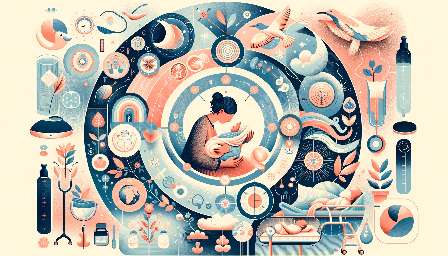As expectant mothers approach their due date, they become increasingly attuned to detecting the physical and emotional signs that labor may be starting. It's essential to be well-informed about these signs in order to prepare for childbirth effectively and make the necessary arrangements. This article explores the physical and emotional signs of labor starting, along with guidance on preparing for childbirth.
Physical Signs of Labor
1. Contractions: Regular and painful contractions are a clear sign that labor is beginning. These contractions are often felt in the lower back and abdomen, gradually increasing in frequency and intensity. Timing the intervals between contractions can help determine when to head to the hospital or birthing center.
2. Water Breaking: The amniotic sac breaking, commonly known as the water breaking, can be a dramatic indicator that labor is approaching. However, not all labors start with the water breaking, and it may occur at any point during the labor process.
3. Cervical Changes: As labor nears, the cervix begins to dilate and efface. Vaginal discharge may also increase, often tinged with blood, known as the mucus plug or bloody show.
Emotional Signs of Labor
1. Nesting Instinct: Some expectant mothers experience a sudden burst of energy and an urge to tidy and organize their surroundings, which is often referred to as the nesting instinct. This can be a strong emotional indicator that labor is imminent.
2. Heightened Emotional State: A surge in emotional sensitivity and a feeling of being on edge are common signs that labor may be approaching. It's important to recognize these emotions as part of the body's response to the impending birth.
Preparing for Childbirth
Preparing for childbirth involves not only being aware of the signs of labor, but also taking proactive steps to ensure a smooth and comfortable experience. Here are some essential tips for expectant mothers preparing for childbirth:
- Attend Childbirth Classes: Enroll in childbirth classes to gain knowledge about the labor process and various pain management techniques. These classes can offer valuable guidance and support.
- Create a Birth Plan: Discuss your preferences and expectations with your healthcare provider and put together a birth plan outlining your choices for labor and delivery.
- Pack a Hospital Bag: Prepare a bag with essentials for yourself and the baby, including comfortable clothing, toiletries, and any items you wish to have with you during labor.
- Arrange Transportation: Have a plan in place for getting to the hospital or birthing center when labor begins, whether it's arranging for a ride or driving yourself.
The Childbirth Process
Once labor begins and the signs are unmistakable, it's crucial to understand the stages of childbirth:
- Early Labor: This stage can be characterized by irregular contractions and mild cervical dilation. It's a good time to rest and conserve energy.
- Active Labor: Contractions become more intense and regular, and the cervix continues to dilate. Pain management techniques may be utilized during this stage.
- Transition: The final phase of labor before the pushing stage. Intense contractions and emotional sensitivity are common during this stage.
- Pushing and Delivery: The urge to push becomes strong as the baby moves through the birth canal. This stage requires guided effort and support from healthcare providers.
- Afterbirth: The delivery of the placenta and the first moments of bonding with the newborn.
By being well-informed about the physical and emotional signs of labor starting and adequately preparing for childbirth, expectant mothers can approach the childbirth experience with confidence and readiness. Understanding what to expect during labor and delivery enables women to make informed decisions and communicate their preferences effectively with their healthcare providers. This level of preparation contributes to a positive and empowering childbirth experience for both mother and baby.


